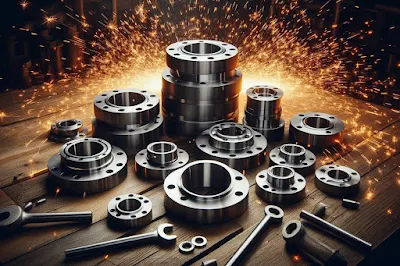Embarking on a steel forging project is quite exciting and intricate task, where precision and creativity interlink to make components that survive the test of time.
As businesses across the globe progressively depend on the strength and durability of forged steel products, knowing the indispensable design considerations develops to be paramount for success.
From selecting the right material grade and optimizing geometries to safeguarding proper heat treatment and machining processes, each decision can meaningfully impact the ultimate outcome.
The industrial process known as steel forging includes shaping steel by the app of compressive pressures, which eventually results in components that are quite tough and tremendously strong.
This procedure is used expansively in a variety of sectors, including the construction industry, aerospace, and the automotive industry, in order to manufacture components that are able to survive higher levels of stress and harsh situations.
It is necessary to give vigilant thought to the design of components for steel forging in order to guarantee optimum performance, cost-effectiveness, and the capacity to manufacture the components. These are the most imperative design factors for steel forging, and we shall discuss them in this blog.
The Selection of Materials
When it comes to the design of forged components, the selection of steel is a very important element. In terms of strength, robustness, and resistance to erosion, the abilities of many kind of steel, like carbon steel, alloy, and stainless steel, are altered from each other.
The specific application of the forged item will determine the kind of steel that is used in the production process.
In the case of components that are imperiled to corrosive conditions, for instance, stainless steel can be needed, nonetheless alloy steel may be quite suitable for applications that demand great strength.
Materials and the Influence It Has on Design
The selection of the appropriate material is one of the most important design factors that must be made during forging. Metals such as steel, aluminum, and titanium are often used in the process of forging.
Each of the below materials has distinctive characteristics that may significantly impact the design from the Steel Forging Supplier.
#1. Steel
Because of its good strength, stiffness, and resistance to wear, it is normally the material of choice for a diversity of apps which includes forging.
Many grades of are carbon steel and alloy steel, all of these possess exceptional qualities that control the extent to that they are appropriate for a given set of uses.
For example, high-carbon steel has a larger level of hardness but might be quite brittle than low-carbon steel. On the other hand, lesser-carbon steel has a greater level of ductility but less strength.
#2. Aluminum
Because it is both less weight and resistant to erosion, aluminum is an outstanding material for use in space and automotive apps. Due of its lessened density, it is possible to save heaviness that gives increase in fuel economy.
Aluminum, is used for interior designers need to prudently consider wall thickness and complete geometry in order to preserve the integrity of the structure.
#3. Titanium
Titanium is highly valued due to its excellent resistance to corrosion and an remarkably strength-to-weight ratio. However, the price of this material is complex than that of both steel and aluminum.
This material is suitable for usage in high-performance industries such as the medical and aviation sectors because to the exceptional attributes it has.
It is necessary for the design considerations for forging to take into account the higher forging temperatures of titanium as well as the possibility of work hardening during the deformation process.
#4. Geometry and Complexity
There is a substantial amount of importance given by Steel Forging Supplier placed on the geometry of the component throughout the forging process.
Shapes that are straightforward and have smooth curves are simpler to forge, and they also result in improved material flow, which eliminates the possibility of flaws.
This might result in an increase in manufacturing costs due to the need for more elaborate die designs and extra processing steps when dealing with complex geometries.
If designers want to avoid sharp corners, they should strive to strike a balance between utility and manufacturability.
Also Read:

